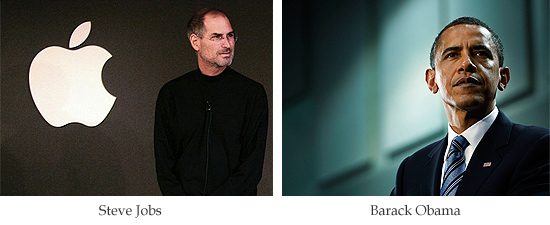In his State of the Union speech, Obama spoke of “out-innovating” the competition. But to focus on his agenda of clean energy and education is to miss a subtle insight into Obama’s skill as an innovator. You see, Obama knows a secret. Steve Jobs knows it to, and so do Mohammad Yunus (grandfather of “microcredit”), Elon Musk (CEO of Tesla Motors), and anyone proven capable of driving significant innovations into the world. The secret is this: people don’t think; they react.
While writing my last book, The Way of Innovation, I came across a fascinating experiment that illustrates this point. Cognitive scientists studied how babies reacted to a popped balloon. The first time a balloon pops, a baby does not respond. But after hearing a balloon pop enough times, the baby starts showing signs of being startled. By the time she is an adult, she responds to a popped balloon immediately and unconsciously.
People act without thinking. Indeed, academics estimate, 94% of our actions are driven by subconscious thought. We hear a balloon, we flinch.
What innovators know (and what the Republican response seemed to miss) is that it is far more difficult to reprogram someone’s response to a popping balloon than it is to show them no balloon is popping.
Let’s start with Steve Jobs and Apple. Last week Apple made two big announcements: Steve Jobs was taking a permanent leave of absence and Apple’s fourth quarter profits increased 78% from last year. There are two ways these facts could have been released and two different triggered responses:
1) Profits first: “Apple profits soars” [but] “Steve Jobs is leaving” would have startled the market like a popped balloon. It would have led to stories about a successful company now losing its leader.
2) Profits second: “Steve Jobs is leaving” [but] “Apple profits soar” avoids startling the market. It leads to stories about Apple maintaining performance despite Jobs leaving.
How the market reacts has less to do with the facts (Steve Jobs was overseeing Apple for over 360 of the 365 days during which Apple produced its annual revenue growth) and all to do with the story investors start telling themselves when they hear the facts. Innovators know how to link the facts to the right stories, the stories that trigger the responses they want to see in others. Obama gets this. He could have made an argument—as too many business gurus do—about the world changing, about us entering an uncharted era. But instead he reaches back to the past and argues that our country is reliving the “Sputnik” moment, when Russia beat us into space.
He strategically chooses to pop the balloon that triggers the response he desires: America waking up to the challenge and “out-innovating” the threat.
How people speak reveals how they view the world. Listen to enough great innovators talk and you will see a pattern. They rarely argue that we are entering an “entirely new world.” To do so is to give up control over how people will respond. Instead they activate a story we know, they suggest that we are reliving something we already have successfully responded to, and thereby better influence our response. They think carefully about which balloon to pop, keeping in mind how we will react without thinking.
It’s a trick we can all learn. Simply ask yourself:
- How do I want my customers/employees/partners to respond to the current situation?
- What story does this remind you of? In what historical account or fairy tale do the main characters respond in this same way?
- How can you link your current situation to the story you want people to believe?
Kaihan Krippendorf (www.kaihan.net), a founding Fellow of the Center for Leadership and an adjunct professor in the College of Business Administration, is the author of Hide a Dagger Behind a Smile and The Way of Innovation. This article was originally written as an entry for his FastCompany.com blog “The Outthinker: Mavericks that Out Innovate the Competition.” The opinions expressed in this column are the writer’s and do not necessarily reflect the views or opinions of either FIU or the College of Business Administration.
View all articles by Kaihan Krippendorff.





